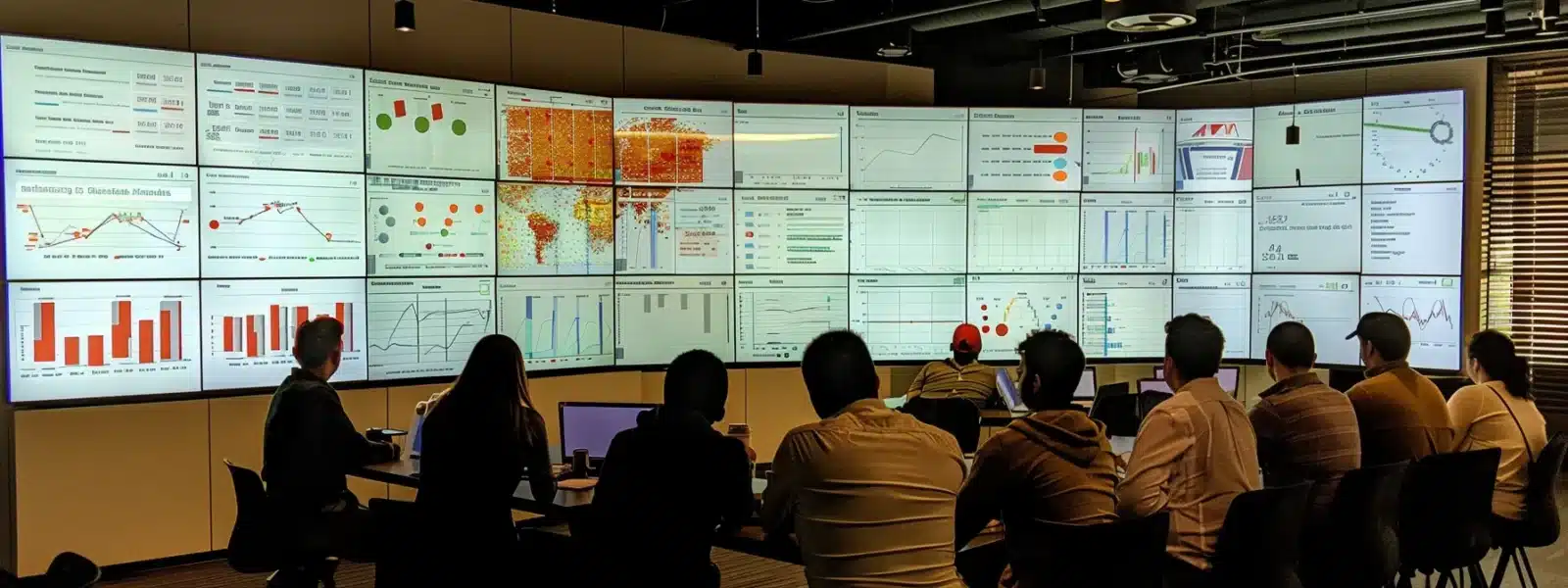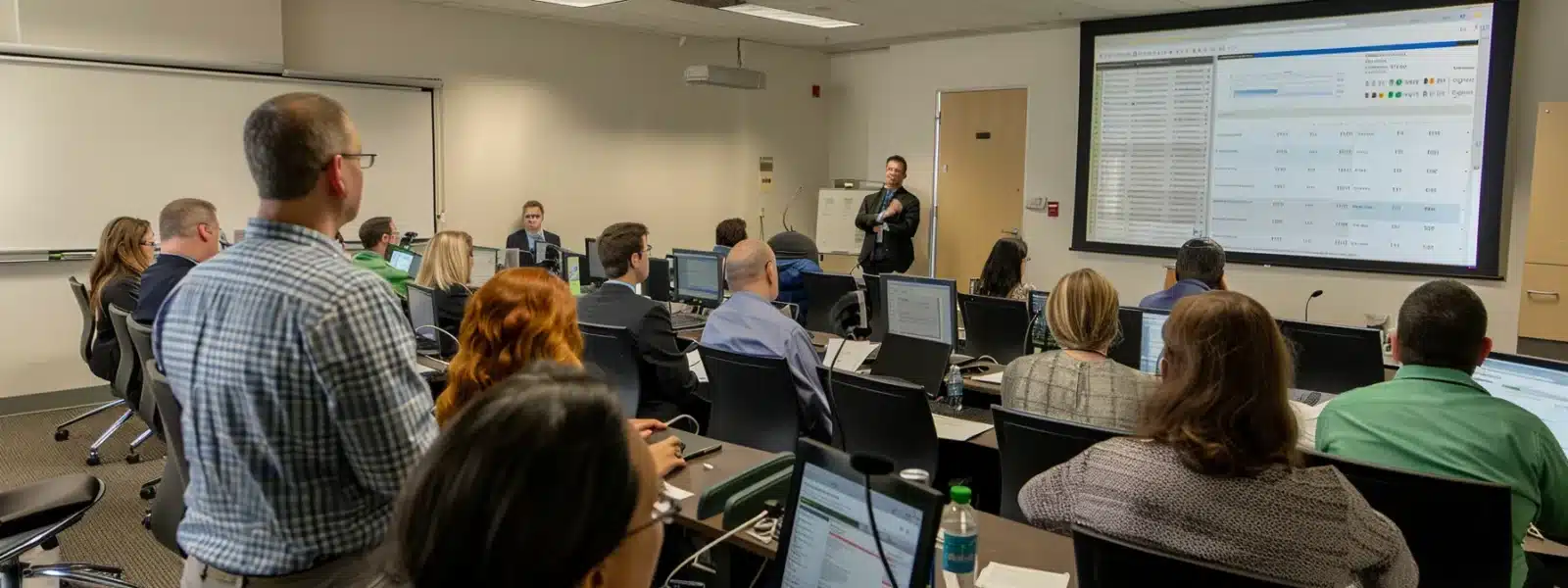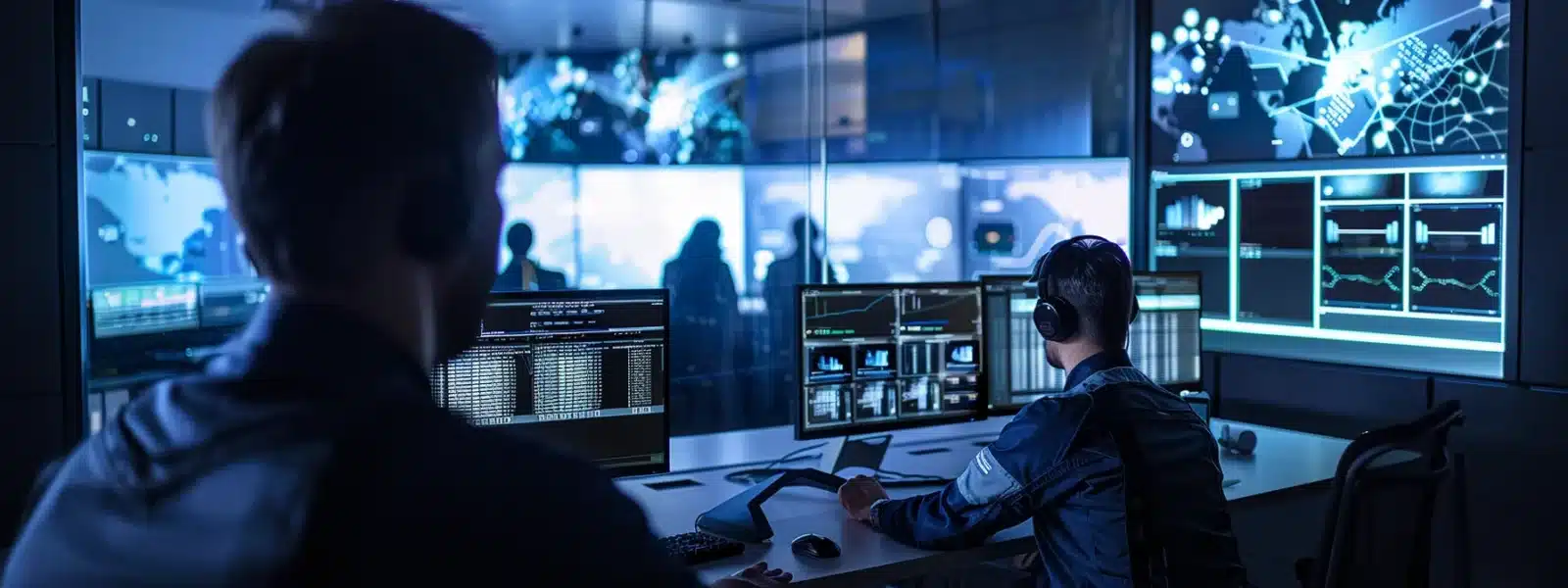Navigating the CMMC assessment process can be challenging for many organizations, especially those dealing with sensitive data under the Federal Acquisition Regulation and International Traffic in Arms Regulations. This guide will outline essential steps, from preparing your organization for assessment to sustaining CMMC compliance. Readers will gain valuable insights into effective CMMC consulting strategies, policy development, and governance practices that can streamline their assessment journey. By addressing common pain points, this content aims to equip businesses with the knowledge needed to achieve and maintain compliance efficiently.
Key Takeaways
- CMMC assessments enhance cybersecurity integrity for defense contractors by identifying vulnerabilities
- Organizations must demonstrate effective managed security services to align with CMMC maturity levels
- Continuous improvement in cybersecurity practices is essential for maintaining compliance with CMMC standards
- Engaging external consultants can streamline preparation and enhance understanding of CMMC requirements
- Establishing a clear timeline and effective communication improves efficiency during the CMMC assessment process
Introduction to the CMMC Assessment Process

The CMMC assessment process plays a crucial role in enhancing cybersecurity integrity for defense contractors. Understanding its evolution reveals the increasing importance of risk assessments in identifying vulnerabilities within the current landscape. This section will outline the key objectives of CMMC assessments, providing insights into how cmmc consulting impacts compliance and operational security for businesses in the defense sector.
Understanding the Role of CMMC in Cybersecurity
The Cybersecurity Maturity Model Certification (CMMC) serves as a vital framework for enhancing cybersecurity within the defense supply chain. By establishing a set of standards that organizations must meet, CMMC ensures that sensitive information is protected through robust practices, including the use of cryptography. This model not only addresses the security of individual contractors but also strengthens the entire ecosystem by promoting a culture of compliance and vigilance across all levels of the supply chain.
In the context of the CMMC assessment process, organizations must demonstrate their ability to implement effective managed security services that align with the required maturity levels. This includes assessing their current cybersecurity posture and identifying areas for improvement. For businesses operating in the GCC High environment, adhering to CMMC standards is essential for maintaining eligibility to work with the Department of Defense and other federal agencies.
Ultimately, the CMMC assessment process is designed to mitigate risks associated with cyber threats, ensuring that defense contractors can operate securely within a complex digital landscape. By focusing on continuous improvement and compliance, organizations can better protect their assets and sensitive data from potential breaches. The following steps outline the key components of the CMMC assessment process:
- Understanding CMMC requirements and maturity levels
- Conducting a self-assessment to identify gaps
- Implementing necessary security controls and practices
- Engaging with a certified third-party assessor
- Preparing for the formal assessment and certification
The Evolution of CMMC and Its Impact on Defense Contractors
The evolution of the Cybersecurity Maturity Model Certification (CMMC) reflects the growing need for robust cybersecurity measures within the defense supply chain. As threats to controlled unclassified information (CUI) have increased, the CMMC framework has been developed to ensure that defense contractors implement necessary security controls. This evolution emphasizes the importance of conducting a thorough gap analysis to identify vulnerabilities and enhance overall cybersecurity posture.
With the introduction of CMMC, defense contractors are now required to undergo rigorous assessments that include penetration tests to evaluate their security measures. These assessments not only help organizations comply with the law but also foster a culture of continuous improvement in cybersecurity practices. By addressing gaps in their security frameworks, contractors can better protect sensitive information and maintain their eligibility to work with the Department of Defense.
The impact of CMMC on defense contractors is significant, as it mandates a shift towards proactive cybersecurity strategies. Organizations must prioritize compliance with CMMC standards to safeguard their operations and the integrity of the defense supply chain. By embracing the CMMC assessment process, contractors can enhance their security measures, mitigate risks, and ultimately contribute to a more secure environment for all stakeholders involved.
Key Objectives of the CMMC Assessment
The key objectives of the CMMC assessment process center around enhancing vulnerability management and ensuring robust information security for defense contractors. By identifying and addressing potential weaknesses in their cybersecurity frameworks, organizations can significantly reduce the risk of data breaches and unauthorized access to sensitive information. This proactive approach not only safeguards critical assets but also aligns with regulatory requirements set forth by the Department of Defense.
Another objective is to establish credibility within the defense supply chain. Achieving CMMC certification demonstrates a contractor’s commitment to maintaining high standards of cybersecurity, which is essential for building trust with clients and partners. Organizations that engage certified information systems security professionals during the assessment process can leverage their expertise to implement effective security controls and practices, further enhancing their overall security posture.
Finally, the CMMC assessment aims to foster a culture of continuous improvement in cybersecurity practices. By regularly evaluating and updating their security measures, organizations can adapt to the evolving threat landscape and ensure compliance with current regulations. This ongoing commitment to information security not only protects sensitive data but also positions defense contractors as reliable partners in the defense ecosystem, ultimately contributing to a more secure operational environment.
Preparing Your Organization for Assessment

Preparing Your Organization for Assessment
To effectively navigate the CMMC assessment process, organizations must first identify their required CMMC level, ensuring alignment with their specific cybersecurity needs. Conducting a thorough self-evaluation will help uncover gaps in current practices, while assembling a dedicated compliance team is essential for implementing a robust strategy. Developing a remediation plan will further enhance risk management efforts, providing the necessary evidence to demonstrate compliance and readiness against potential cyberattacks.
Identifying Your Required CMMC Level
Identifying the required CMMC level is a critical first step for any organization preparing for the CMMC assessment. Each level of the CMMC framework corresponds to specific cybersecurity practices and processes that must be implemented to protect sensitive information. Organizations should evaluate their current infrastructure and the type of controlled unclassified information (CUI) they handle to determine the appropriate level of certification needed to comply with Department of Defense requirements.
Organizations must also consider the implications of the False Claims Act when determining their CMMC level. Non-compliance can lead to significant legal repercussions, including penalties under this act. By accurately identifying their required CMMC level, organizations can avoid potential pitfalls and ensure they are not only compliant but also capable of effectively managing their cybersecurity risks through appropriate managed services.
To facilitate this process, organizations should conduct a comprehensive self-assessment that highlights existing gaps in their cybersecurity practices. This assessment should include a review of current policies, procedures, and technologies in place. By understanding their current state, organizations can develop a targeted remediation plan that aligns with their required CMMC level and enhances their overall cybersecurity posture:
- Evaluate current infrastructure and CUI handling
- Understand the implications of the False Claims Act
- Conduct a comprehensive self-assessment
- Develop a targeted remediation plan
Conducting a Thorough Self-Evaluation
Conducting a thorough self-evaluation is a fundamental step in preparing for the CMMC assessment process. Organizations must assess their current cybersecurity posture to identify vulnerabilities, particularly in the context of threats such as ransomware. This evaluation should follow a structured methodology that aligns with CMMC requirements, ensuring that all aspects of risk management are addressed effectively.
During the self-evaluation, businesses should focus on their adherence to established cybersecurity practices and controls. This includes reviewing existing policies, procedures, and technologies to determine their effectiveness in mitigating risks. By identifying gaps in their current framework, organizations can develop a targeted remediation plan that enhances their overall security posture and prepares them for certification.
To facilitate a successful self-evaluation, organizations can implement a systematic approach that includes the following steps:
- Assess current cybersecurity policies and practices.
- Identify vulnerabilities related to ransomware and other threats.
- Evaluate adherence to CMMC requirements and best practices.
- Develop a remediation plan to address identified gaps.
Assembling a Dedicated Compliance Team
Assembling a dedicated compliance team is essential for organizations preparing for the CMMC assessment process. This team should consist of individuals with expertise in cybersecurity, risk management, and compliance frameworks such as FedRAMP and the Cybersecurity Maturity Model Certification (CMMC). By bringing together professionals with diverse skills, organizations can effectively address the complexities of access control and other critical areas of cybersecurity.
The compliance team should be responsible for conducting thorough assessments of current practices and identifying potential threats to sensitive information. This includes evaluating existing security measures and ensuring they align with CMMC certification requirements. By having a focused team, organizations can streamline their efforts to enhance their cybersecurity posture and prepare for the rigorous assessment process.
Furthermore, the compliance team should develop and implement a comprehensive strategy that includes regular training and updates on evolving cybersecurity threats. This proactive approach not only helps in maintaining compliance but also fosters a culture of security awareness within the organization. By prioritizing the assembly of a dedicated compliance team, businesses can significantly improve their readiness for the CMMC assessment and ensure they meet the necessary standards for protecting controlled unclassified information (CUI):
- Identify key roles and responsibilities within the compliance team.
- Evaluate current cybersecurity practices and identify gaps.
- Develop a strategy for ongoing training and threat awareness.
Developing a Remediation Plan
Developing a remediation plan is a critical step for organizations preparing for the CMMC assessment process. This plan should address identified gaps in cybersecurity practices, ensuring alignment with the National Institute of Standards and Technology (NIST) guidelines. By incorporating robust authentication measures and security controls, organizations can enhance their overall security posture and build confidence in their ability to protect sensitive information.
A well-structured remediation plan should prioritize the implementation of necessary security controls, particularly for mobile devices that may access controlled unclassified information (CUI). Organizations must evaluate their current practices and integrate solutions that mitigate risks associated with unauthorized access. This proactive approach not only prepares businesses for the upcoming audit but also fosters a culture of security awareness among employees.
Furthermore, the remediation plan should include regular reviews and updates to ensure ongoing compliance with CMMC requirements. By establishing a timeline for implementing security measures and conducting periodic assessments, organizations can adapt to evolving threats and maintain their readiness for future audits. This commitment to continuous improvement ultimately strengthens the organization’s cybersecurity framework and enhances its reputation within the defense supply chain.
The Step-by-Step CMMC Assessment Procedure

The CMMC assessment procedure involves several critical steps that ensure a thorough evaluation of an organization’s cybersecurity practices. This includes selecting an accredited assessment organization, submitting necessary documentation, and considering the implications of on-site versus remote assessments. Additionally, addressing assessor inquiries is vital for maintaining confidentiality and demonstrating knowledge of the system. Each of these components plays a significant role in navigating the complexity of the CMMC assessment process.
Selecting an Accredited Assessment Organization
Choosing an accredited assessment organization is a critical step in the CMMC assessment process. Organizations should prioritize firms that have a proven track record in cybersecurity and compliance, particularly those experienced in mobile device management and the specific requirements of the CMMC framework. This ensures that the selected organization understands the nuances of the defense supply chain and can provide tailored guidance to meet compliance standards.
When evaluating potential assessment organizations, businesses should consider their approach to outsourcing and subcontractor management. An effective assessment organization will demonstrate accountability in their processes, ensuring that all aspects of the assessment are handled with integrity and transparency. This is essential for building trust and ensuring that the organization is well-prepared for the rigorous CMMC certification process.
Additionally, organizations should seek assessment firms that offer comprehensive support throughout the assessment journey. This includes not only the assessment itself but also ongoing consultation regarding best practices in cybersecurity and compliance. By partnering with a knowledgeable assessment organization, businesses can enhance their overall cybersecurity posture and ensure they are well-equipped to navigate the complexities of the CMMC assessment process.
Submitting Necessary Documentation
Submitting necessary documentation is a critical step in the CMMC assessment process, as it provides the foundation for evaluating an organization‘s compliance with the CMMC proposed rule. Organizations must compile a comprehensive set of documents that demonstrate their adherence to required cybersecurity practices, including policies related to encryption and cloud computing. This documentation not only supports the assessment but also showcases the organization‘s commitment to maintaining robust security measures.
During the submission phase, it is essential for organizations to ensure that all documentation is accurate and up-to-date. This includes contracts that outline security responsibilities and any agreements with third-party vendors involved in managing sensitive data. By presenting clear and organized documentation, organizations can facilitate a smoother assessment process and reduce the likelihood of delays or complications.
Furthermore, organizations should be prepared to provide evidence of their accreditation status and any relevant certifications that align with CMMC requirements. This may involve submitting proof of completed training programs or security audits that validate their cybersecurity posture. By proactively addressing these documentation needs, organizations can enhance their readiness for the CMMC assessment and demonstrate their dedication to protecting controlled unclassified information (CUI).
On-Site vs. Remote Assessment Considerations
When considering the CMMC assessment process, organizations must weigh the benefits and challenges of on-site versus remote assessments. On-site assessments allow assessors to interact directly with the organization’s systems and personnel, providing a comprehensive view of cybersecurity practices. This face-to-face engagement can foster better communication and immediate clarification of any issues that arise during the evaluation.
In contrast, remote assessments offer flexibility and can reduce costs associated with travel and logistics. Organizations can prepare their documentation and systems for review without the need for physical presence, which can be particularly advantageous for those with limited resources. However, remote assessments may limit the assessor’s ability to fully evaluate certain physical security measures or on-site practices that are critical to compliance.
Ultimately, the choice between on-site and remote assessments should align with the organization‘s specific needs and circumstances. Factors such as the complexity of the systems being assessed, the availability of personnel, and the organization‘s overall readiness for the assessment play a significant role in this decision. Organizations should carefully evaluate these considerations to ensure a successful CMMC assessment process:
| Assessment Type | Advantages | Challenges |
|---|---|---|
| On-Site | Direct interaction, comprehensive evaluation | Higher costs, logistical challenges |
| Remote | Cost-effective, flexible scheduling | Limited physical evaluation, potential communication barriers |
Addressing Assessor Inquiries
Addressing assessor inquiries is a critical component of the CMMC assessment process. Organizations must be prepared to respond to questions regarding their cybersecurity practices, policies, and overall compliance with CMMC standards. Clear and concise answers not only demonstrate an organization‘s understanding of its security measures but also build trust with the assessors, showcasing a commitment to transparency and accountability.
During the assessment, assessors may inquire about specific security controls and how they are implemented within the organization. It is essential for businesses to have documentation readily available that outlines their cybersecurity framework, including policies related to access control, incident response, and data protection. By providing thorough explanations and supporting evidence, organizations can effectively address any concerns raised by the assessors, reinforcing their readiness for certification.
Furthermore, organizations should foster open communication with assessors throughout the evaluation process. This includes actively engaging in discussions and seeking clarification on any points of confusion. By maintaining a collaborative approach, organizations can ensure that assessors have a comprehensive understanding of their cybersecurity posture, ultimately leading to a smoother assessment experience and a higher likelihood of achieving CMMC certification.
Navigating Post-Assessment Activities

Post-assessment activities are crucial for organizations navigating the CMMC assessment process. This section will cover reviewing the assessment findings to identify strengths and weaknesses, implementing corrective actions for any non-compliant areas, and understanding the certification approval process. Additionally, it will highlight the importance of feedback in refining cybersecurity practices and ensuring ongoing compliance.
Reviewing the Assessment Findings
Reviewing the assessment findings is a critical step in the CMMC assessment process. Organizations must carefully analyze the results to identify both strengths and weaknesses in their cybersecurity practices. This evaluation not only highlights areas that require improvement but also reinforces the effectiveness of existing security measures, ensuring that the organization is well-prepared for future compliance requirements.
During this review, it is essential for organizations to engage their compliance team and relevant stakeholders. By collaborating on the findings, they can develop a comprehensive understanding of the assessment results and prioritize corrective actions. This collaborative approach fosters a culture of accountability and continuous improvement, which is vital for maintaining compliance with CMMC standards.
Furthermore, organizations should document the assessment findings and the subsequent action plan. This documentation serves as a valuable resource for future assessments and audits, demonstrating the organization‘s commitment to cybersecurity. By maintaining clear records, businesses can effectively track their progress and ensure ongoing compliance with CMMC requirements:
| Assessment Findings | Action Items | Responsible Parties |
|---|---|---|
| Identified gaps in access control | Implement stronger authentication measures | IT Security Team |
| Insufficient incident response plan | Develop and test incident response procedures | Compliance Team |
| Outdated security policies | Review and update security policies | Policy Management Team |
Implementing Corrective Actions for Non-Compliant Areas
Implementing corrective actions for non-compliant areas is essential for organizations seeking to achieve CMMC certification. After reviewing assessment findings, businesses must prioritize addressing identified gaps in their cybersecurity practices. This may involve enhancing access controls, updating incident response plans, or revising security policies to align with CMMC requirements.
Organizations should develop a structured approach to corrective actions, ensuring that each identified issue is assigned to responsible parties with clear timelines for resolution. For instance, if an organization discovers weaknesses in its authentication measures, it should implement stronger protocols and conduct training sessions for employees to reinforce compliance. This proactive strategy not only mitigates risks but also demonstrates a commitment to maintaining high cybersecurity standards.
Continuous monitoring and evaluation of implemented corrective actions are crucial for long-term compliance. Organizations must regularly assess the effectiveness of their changes and make adjustments as necessary to adapt to evolving threats. By fostering a culture of accountability and improvement, businesses can enhance their cybersecurity posture and ensure they remain compliant with CMMC standards, ultimately safeguarding sensitive information and maintaining eligibility for defense contracts.
Certification Approval Process
The certification approval process is a critical phase following the CMMC assessment, where organizations await the official determination of their compliance status. This process involves a thorough review of the assessment findings by the certifying body, which evaluates whether the organization has met the necessary cybersecurity standards outlined in the CMMC framework. Timely communication with the assessment organization can help clarify any outstanding issues and expedite the approval process.
Once the review is complete, organizations will receive a certification decision, which may include recommendations for further improvements or a timeline for re-assessment if compliance is not achieved. Understanding the implications of this decision is essential, as it directly affects the organization’s eligibility to work with the Department of Defense and other federal agencies. Organizations should be prepared to address any feedback provided to enhance their cybersecurity posture and ensure ongoing compliance.
Successful navigation of the certification approval process not only validates an organization’s commitment to cybersecurity but also strengthens its reputation within the defense supply chain. By maintaining open lines of communication with assessors and promptly addressing any identified gaps, organizations can foster a culture of continuous improvement. This proactive approach ultimately positions them as reliable partners in the defense ecosystem, enhancing their operational security and compliance with CMMC standards.
Understanding the Importance of Feedback
Feedback plays a vital role in the CMMC assessment process, as it provides organizations with insights into their cybersecurity practices and compliance status. By carefully reviewing the feedback received from assessors, businesses can identify specific areas that require improvement, ensuring they address any vulnerabilities in their security framework. This proactive approach not only enhances their overall cybersecurity posture but also aligns with the continuous improvement ethos emphasized by the CMMC standards.
Organizations should view feedback as an opportunity for growth rather than a setback. Constructive criticism from assessors can highlight gaps in policies, procedures, or technologies that may have gone unnoticed. By taking this feedback seriously and implementing necessary changes, organizations can strengthen their defenses against cyber threats and demonstrate their commitment to maintaining high standards of cybersecurity within the defense supply chain.
Moreover, engaging with feedback fosters a culture of accountability and transparency within the organization. When teams actively discuss and act upon the insights provided by assessors, it encourages collaboration and knowledge sharing. This not only prepares the organization for future assessments but also builds trust with clients and partners, reinforcing their reputation as reliable and compliant entities in the defense sector.
Sustaining CMMC Compliance

Sustaining CMMC compliance requires organizations to establish continuous monitoring practices, stay updated on evolving CMMC requirements, and train staff on ongoing compliance obligations. Additionally, preparing for future reassessments is essential to maintain certification. Each of these components plays a vital role in ensuring that organizations remain vigilant and proactive in their cybersecurity efforts, ultimately safeguarding sensitive information and enhancing operational security.
Establishing Continuous Monitoring Practices
Establishing continuous monitoring practices is essential for organizations aiming to sustain CMMC compliance. This involves implementing real-time security measures that track and assess the effectiveness of cybersecurity controls. By utilizing automated tools and regular audits, businesses can identify vulnerabilities promptly, ensuring that their defenses remain robust against evolving threats.
Organizations should integrate continuous monitoring into their daily operations to maintain compliance with CMMC standards. This includes regularly reviewing access controls, incident response protocols, and data protection measures. By fostering a proactive approach, companies can not only address potential weaknesses but also demonstrate their commitment to safeguarding sensitive information within the defense supply chain.
Furthermore, training staff on the importance of continuous monitoring enhances an organization’s overall security posture. Employees should be aware of their roles in maintaining compliance and the significance of reporting any anomalies. By cultivating a culture of vigilance and accountability, organizations can better protect their assets and ensure ongoing adherence to CMMC requirements.
Keeping Up With Updates to CMMC Requirements
Keeping up with updates to CMMC requirements is essential for organizations aiming to maintain compliance and protect sensitive information. The CMMC framework is subject to periodic revisions, reflecting the evolving landscape of cybersecurity threats and regulatory expectations. Organizations must stay informed about these changes to ensure their cybersecurity practices align with the latest standards set forth by the Department of Defense.
To effectively track updates, organizations should establish a routine for reviewing CMMC-related communications from official sources, such as the CMMC Accreditation Body and the Department of Defense. Engaging with industry forums and participating in webinars can also provide valuable insights into upcoming changes and best practices. By fostering a proactive approach to information gathering, organizations can adapt their cybersecurity strategies in a timely manner.
Additionally, organizations should consider implementing a dedicated compliance officer or team responsible for monitoring CMMC updates and ensuring that all staff are trained on new requirements. This role is crucial for maintaining a culture of compliance and vigilance within the organization. By prioritizing ongoing education and awareness, businesses can better navigate the complexities of CMMC compliance and enhance their overall cybersecurity posture:
- Establish a routine for reviewing CMMC communications.
- Engage with industry forums and webinars for insights.
- Implement a dedicated compliance officer or team.
- Prioritize ongoing education and awareness for staff.
Training Staff on Ongoing Compliance Obligations
Training staff on ongoing compliance obligations is essential for organizations striving to maintain CMMC certification. Employees must understand their roles in upholding cybersecurity practices and the importance of adhering to established protocols. Regular training sessions can help reinforce these concepts, ensuring that all team members are equipped to recognize and respond to potential security threats effectively.
Organizations should implement a structured training program that covers the latest CMMC requirements and best practices. This program can include workshops, online courses, and hands-on exercises that engage employees and enhance their understanding of compliance obligations. By fostering a culture of continuous learning, businesses can empower their staff to take an active role in safeguarding sensitive information and maintaining compliance with CMMC standards.
Additionally, organizations should encourage open communication regarding compliance issues and security concerns. Establishing channels for employees to report anomalies or seek clarification on compliance matters can significantly enhance an organization‘s overall security posture. By prioritizing staff training and engagement, businesses can create a proactive environment that not only meets CMMC requirements but also strengthens their defense against cyber threats.
Preparing for Future Reassessments
Preparing for future reassessments is essential for organizations aiming to maintain CMMC compliance. This involves establishing a proactive approach to cybersecurity that includes regular reviews of security practices and policies. By continuously assessing their cybersecurity posture, organizations can identify potential vulnerabilities before they become significant issues, ensuring they remain compliant with CMMC standards.
Organizations should implement a structured schedule for internal audits and assessments to prepare for future CMMC reassessments. This routine can help identify gaps in compliance and provide opportunities for improvement. By documenting these findings and corrective actions, businesses can demonstrate their commitment to maintaining high cybersecurity standards and readiness for upcoming assessments.
Additionally, engaging staff in ongoing training and awareness programs is crucial for sustaining compliance. Employees should be informed about their roles in upholding cybersecurity practices and the importance of adhering to established protocols. By fostering a culture of security awareness, organizations can enhance their overall cybersecurity posture and ensure they are well-prepared for future CMMC reassessments:
| Preparation Activity | Description | Frequency |
|---|---|---|
| Internal Audits | Conduct regular reviews of cybersecurity practices and policies. | Quarterly |
| Training Programs | Provide ongoing training for staff on compliance obligations. | Bi-Annually |
| Documentation Review | Update and maintain records of compliance efforts and findings. | Monthly |
Strategies for a Successful CMMC Assessment

Organizations preparing for the CMMC assessment process often face common challenges that can hinder their progress. This section will explore strategies to overcome these obstacles, including leveraging technology solutions for compliance and the benefits of external consultation services. Additionally, it will discuss how to maximize efficiency throughout the assessment process, providing practical insights to enhance readiness and ensure successful certification.
Common Challenges and How to Overcome Them
One common challenge organizations face during the CMMC assessment process is the complexity of understanding the various maturity levels and requirements. Many businesses struggle to align their existing cybersecurity practices with the specific standards outlined in the CMMC framework. To overcome this, organizations should invest time in comprehensive training and resources that clarify the CMMC requirements, ensuring that all team members are on the same page regarding compliance expectations.
Another significant hurdle is the identification and remediation of gaps in current cybersecurity practices. Organizations often find it difficult to pinpoint vulnerabilities that could hinder their compliance efforts. Engaging with experienced cybersecurity consultants can provide valuable insights and facilitate a thorough gap analysis, allowing businesses to implement effective remediation strategies that align with CMMC standards and enhance their overall security posture.
Lastly, maintaining effective communication throughout the assessment process can be challenging, especially when dealing with multiple stakeholders. Miscommunication can lead to delays and misunderstandings regarding compliance requirements. To address this issue, organizations should establish clear lines of communication and designate a compliance lead who can coordinate efforts, ensuring that all parties are informed and aligned throughout the CMMC assessment journey.
Leveraging Technology Solutions for Compliance
Leveraging technology solutions is essential for organizations aiming to achieve compliance with the Cybersecurity Maturity Model Certification (CMMC). By utilizing advanced cybersecurity tools, businesses can automate processes such as risk assessments, vulnerability scanning, and incident response. This not only streamlines compliance efforts but also enhances the overall security posture, allowing organizations to focus on their core operations while ensuring that sensitive information is adequately protected.
Implementing cloud-based security solutions can significantly aid in meeting CMMC requirements. These solutions provide real-time monitoring and reporting capabilities, enabling organizations to track their compliance status continuously. For instance, using Security Information and Event Management (SIEM) systems allows businesses to analyze security data and respond to threats promptly, thereby reducing the risk of data breaches and ensuring adherence to CMMC standards.
Furthermore, organizations should consider integrating compliance management software to facilitate documentation and reporting processes. This type of technology can help maintain accurate records of security controls, policies, and procedures, which are crucial during the CMMC assessment. By centralizing compliance documentation, businesses can ensure that all necessary information is readily available for assessors, ultimately expediting the certification process:
| Technology Solution | Benefits | Application in CMMC Compliance |
|---|---|---|
| Cybersecurity Tools | Automates risk assessments and vulnerability scanning | Enhances security posture and streamlines compliance |
| Cloud-Based Security Solutions | Provides real-time monitoring and reporting | Tracks compliance status continuously |
| Compliance Management Software | Centralizes documentation and reporting | Facilitates easier access to necessary information for assessors |
Benefits of External Consultation Services
External consultation services provide organizations with specialized expertise that is crucial for navigating the complexities of the CMMC assessment process. These consultants bring a wealth of knowledge about the CMMC framework, helping businesses understand the specific requirements and maturity levels necessary for compliance. By leveraging their experience, organizations can avoid common pitfalls and streamline their preparation efforts, ultimately enhancing their chances of successful certification.
Additionally, external consultants can conduct thorough gap analyses to identify vulnerabilities in an organization’s cybersecurity practices. This proactive approach allows businesses to address weaknesses before the formal assessment, ensuring that they meet all necessary standards. For instance, a consultant may recommend specific security controls or practices that align with CMMC requirements, providing actionable insights that strengthen the organization’s overall security posture.
Moreover, engaging with external consultation services fosters a culture of continuous improvement within the organization. Consultants not only assist in preparing for the assessment but also provide ongoing support and training to staff, ensuring that employees remain informed about evolving cybersecurity threats and compliance obligations. This commitment to education and awareness ultimately positions organizations as reliable partners in the defense supply chain, enhancing their reputation and operational security:
| Benefit | Description | Impact on CMMC Assessment |
|---|---|---|
| Specialized Expertise | Consultants provide in-depth knowledge of CMMC requirements. | Improves understanding and preparation for compliance. |
| Gap Analysis | Identifies vulnerabilities in cybersecurity practices. | Addresses weaknesses before formal assessment. |
| Continuous Improvement | Offers ongoing support and training for staff. | Enhances overall security posture and compliance readiness. |
Maximizing Efficiency Throughout the Assessment Process
To maximize efficiency throughout the CMMC assessment process, organizations should establish a clear timeline that outlines each phase of preparation and assessment. This timeline should include deadlines for documentation submission, self-assessments, and meetings with assessors. By adhering to a structured schedule, businesses can ensure that all necessary steps are completed in a timely manner, reducing the risk of last-minute complications that could hinder compliance efforts.
Effective communication is another key factor in enhancing efficiency during the CMMC assessment. Organizations should designate a compliance lead who can coordinate between internal teams and external assessors. This role is crucial for ensuring that all parties are informed about expectations, timelines, and any changes that may arise during the assessment process, ultimately streamlining operations and minimizing misunderstandings.
Leveraging technology solutions can significantly improve the efficiency of the CMMC assessment process. By utilizing compliance management software, organizations can centralize documentation and track progress in real-time. This not only simplifies the organization of necessary materials but also allows for quick access to information during the assessment, enabling businesses to respond promptly to assessor inquiries and maintain a smooth evaluation process.
Conclusion
Navigating the CMMC assessment process is essential for defense contractors aiming to enhance their cybersecurity posture and maintain compliance with Department of Defense requirements. By understanding the key objectives, preparing effectively, and engaging with accredited assessment organizations, businesses can identify vulnerabilities and implement necessary security controls. Continuous monitoring and staff training further ensure ongoing compliance and readiness for future assessments. Ultimately, a proactive approach to the CMMC assessment not only safeguards sensitive information but also strengthens an organization’s reputation within the defense supply chain.




